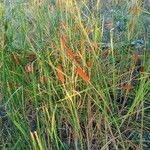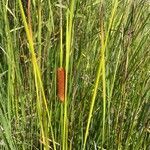A rush. It grows 1.2 m tall. The leaves are greyish-green and narrow and half round. They have a groove on one side and are round on the other. The flowers are in a spike. The male flowers are light brown and above and separated from the dark brown female flowers below.



